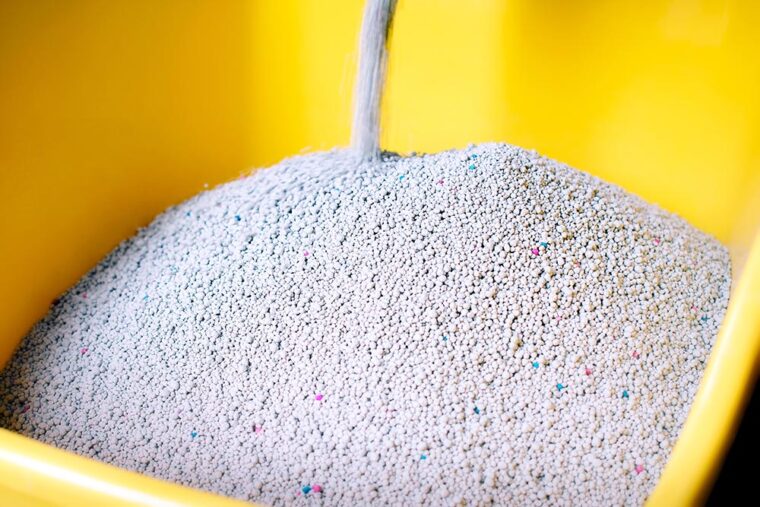
Cat litter is something your kitties will step in every day—and consequently track throughout your house. But the spread doesn’t stop there, unfortunately, as you’ll often see your cat licking it off their paws during grooming on your couch and leaving particles on your carpets.
So, naturally, it’s understandable for you to be curious about the ingredients. After all, you’re pretty good about knowing what is in your cat’s daily food bowl, why not know about the safety of cat litter? Let’s take a look at the different kinds of cat litter and how to choose the right one for your cat.
Comparing the 3 Functions of Cat Litter
Before you settle on a cat litter, what are the differences, anyway? It’s hard to tell when you see so much marketing as you walk down the kitty litter aisle. Let’s face it—no one wants to smell cat waste or mask these smells with other heavy fragrances.
So, what are the factors that set cat litters apart from each other?
1. Clumping vs. Non-Clumping
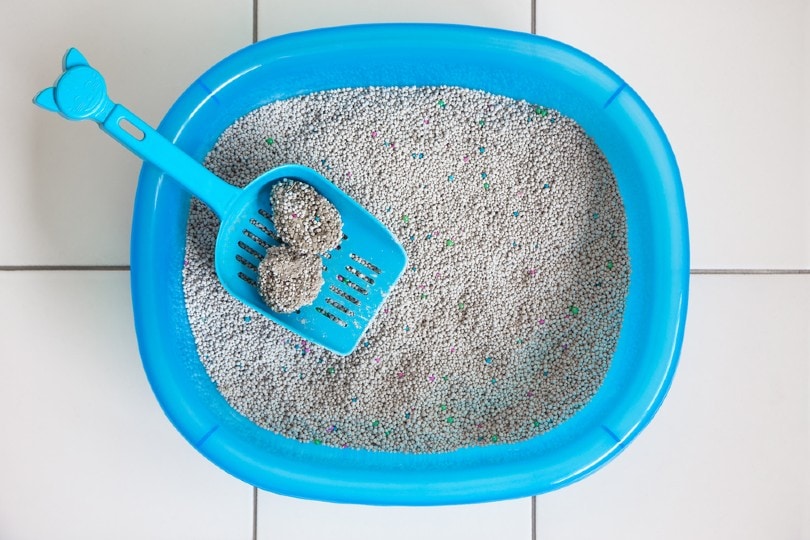
Clumping cat litter has a component in it that helps it adhere to the cat waste, producing a barrier. This type of litter traps the urine or feces therein, and many claim this makes cleaning easier and smells less noticeable.
Non-clumping cat litter does not have this effect. It doesn’t provide coverage for feces, and urine simply trickles to the bottom of the pan or pools up on top—depending on the matter. Even though it might not seem as effective, it is usually more natural than its clumping competitor.
However, because the granules from non-clumping cat litter are larger, it creates much less dust content when you pour. So, allergy sufferers and kitties alike might appreciate not having dust clouds all around.
When it comes down to it, it’s a matter of preference.
2. Unscented vs. Scented

Some cat litters have absolutely no scent added to them. While this might not do so hot at masking odors, depending on the type, it is more natural. Sometimes, litter can include natural scents that aren’t harmful to the nasal passages.
Some fragrance can irritate your felines, causing sneezing and discomfort—and it can do the same thing to us humans. However, if you and your cat are tolerant to it, it does smell fresh and work to mask the odorous masses our kitties leave behind for us to scoop up.
3. Chemical Compounds vs. Natural Ingredients
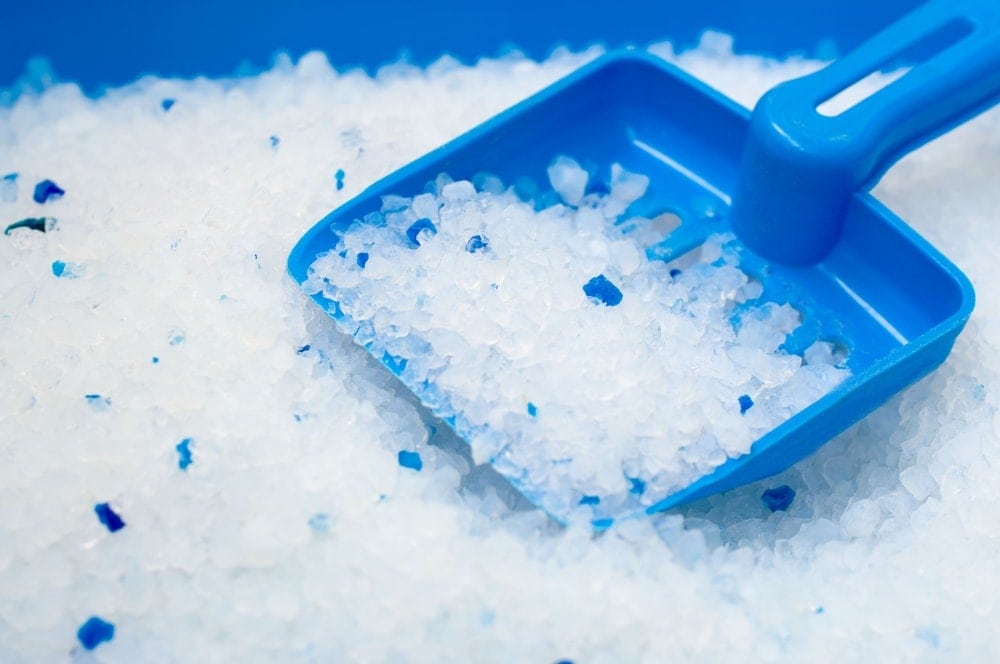
When you are trying to fight odors, you can get scent boosters in the litter that eliminates smells at the source. Many companies pair with products like Febreze and baking soda, or odor blasters to reduce litter box smells, keeping things fresh.
However, these chemicals can be a tad harsh—and some cats might be very sensitive to it. Because of this, many owners want more natural litter to deal with at potty time.
The 10 Types of Cat Litter & Their Ingredients
1. Clay Cat Litter

Clay cat litter is the most popular cat litter choice on the shelves. It has been a top choice for cat owners everywhere to cover cat waste and reduce the stench that comes along with the porter potty in your laundry room.
You can get clay cat litter in both clumping and non-clumping varieties. Some are lightweight while others are pretty heavy. Since clay litters are plentiful, you can find them in just about any department or dollar store around—so no special ordering is necessary.
2. Paper Pellet Cat Litter

Paper pellet litter is usually made of recycled materials that are biodegradable. This litter choice is catching on these days as people become more environmentally conscious.
Paper pellet litter needs to be changed out more often and isn’t as effective at combating smells as some other selections, but it might be worth it.
3. Crystal Cat Litter
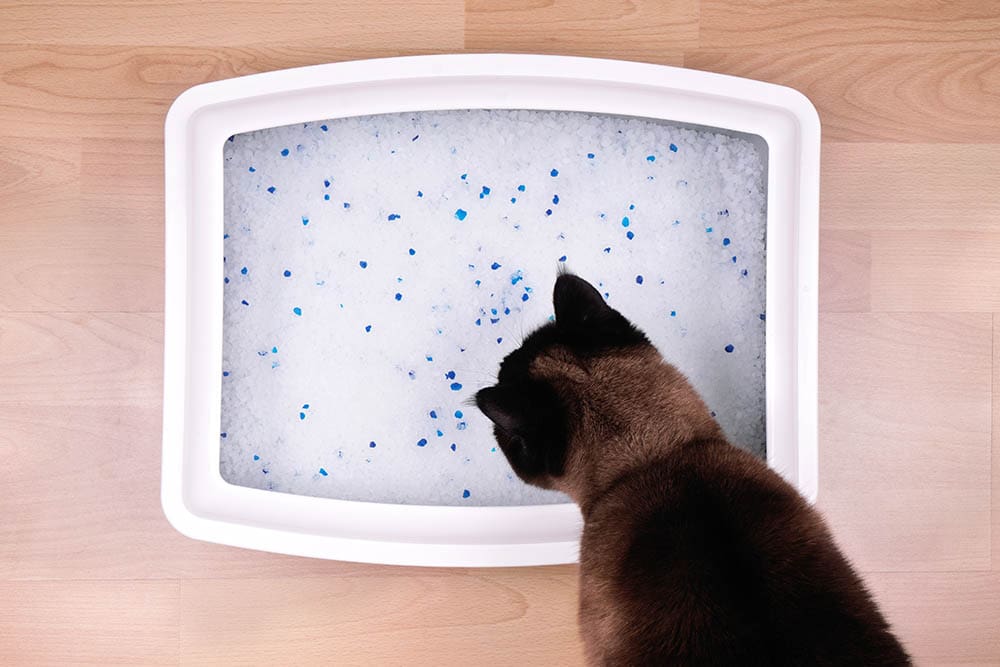
You might have seen crystal cat litter raving on the market and wonder to yourself—what is crystal cat litter made of? Crystal litter is actually quite safe and pretty darn effective at masking smells. Also, it’s very easy to sift through.
Crystal cat litter is made of tiny silica pebbles that absorb smells, but the formula doesn’t clump.
4. Tofu Cat Litter

Tofu cat litter is plant-derived, making it all-natural for those looking to simplify their litter. The particles are non-stick, so you won’t have to worry about having to struggle during cleaning.
Because the material is ultra-soft, it’s very comfortable for the paws—and it doesn’t track as much either. Because it is a little rarer than some, you’ll have more luck finding this online rather than at a department store.
5. Pine Cat Litter
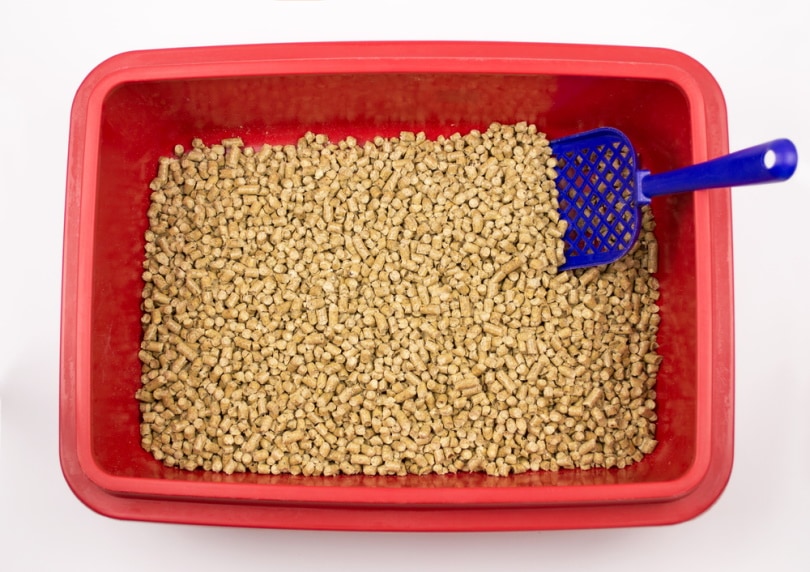
Pine litter is essentially a lot like hamster bedding. It’s made of small pine shavings. Does it smell fantastic? Absolutely. Is it effective? You be the judge.
Pine cat litter is super lightweight and has lower tracking than some others. However, because it clings, it might get stuck to carpets and other materials easily.
6. Recycled Cat Litter

If you want an environmentally-friendly approach, try recycled cat litter. It’s a non-clumping litter made from old paper that reduces landfill waste—saving on trees. Because it is old paper, it is nearly dust-free, which is excellent to minimize poof clouds.
These granules or pellets are a little big, so no tracking out of the box is a perk, too.
7. Walnut Shell Cat Litter
Walnut shell cat litter is another environmentally conscious choice. It has natural odor-neutralizing properties that combat any of your cat’s homemade aromas. It’s supposed to work better than traditional clay litter.
One upside of walnut litter is that it naturally clumps around moisture. So, if you’re looking for a cat litter that adheres to the waste, this is an eco-friendly pick.
8. Corn Cat Litter
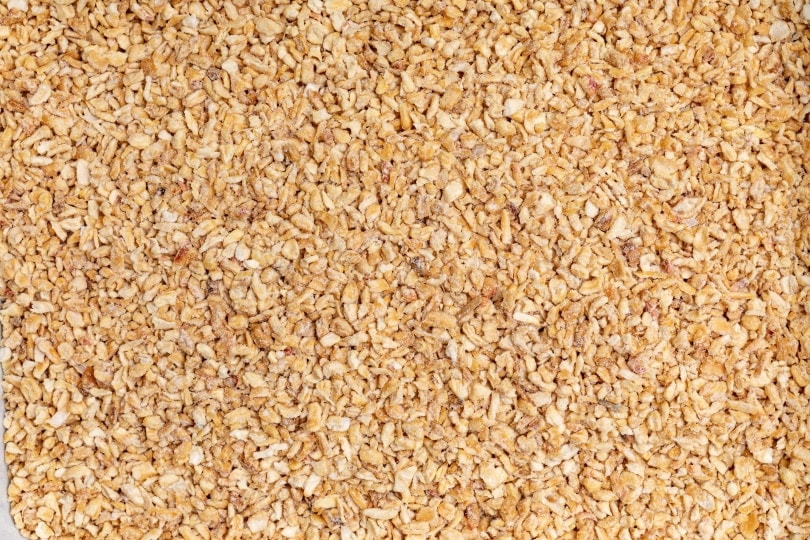
Many users rave about corn cat litter because it is so absorbent. Corn cat litter is made from ground-up corn cobs, making it totally safe and all-natural for felines.
Did we mention it’s completely biodegradable and compostable?
9. Wheat Litter
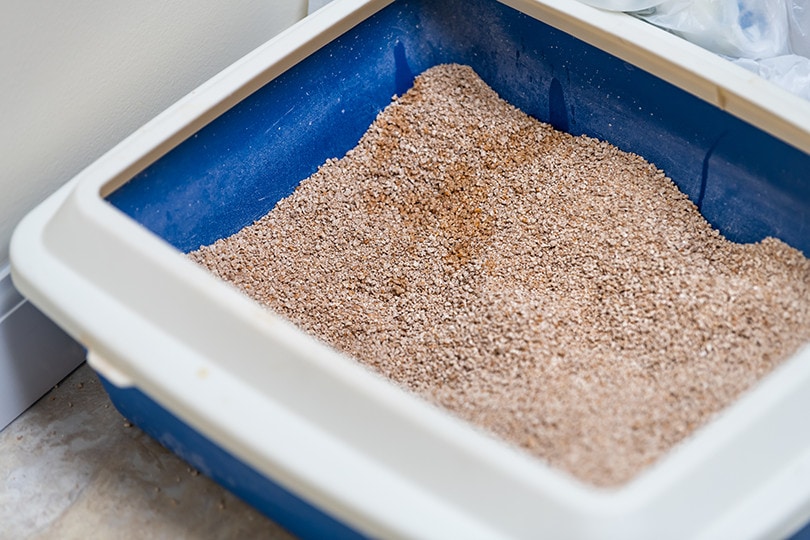
Wheat cat litter is natural, septic, and sewer safe, and therefore, it’s flushable. Since it’s edible, you won’t have to worry about it being harmful if ingested by your cat, which is a huge perk.
Also, wheat cat litter is super absorbent. It works very well and is relatively inexpensive to replace.
10. Grass Litter
What’s better for felines than good old grass to poop in? Rather than being a blade of grass, this type of litter consists of grass seed. The grass seed collects on waste, and when you’re done, you simply toss it out to grow.
It is the only cat litter that grows into something better when you’re all finished. However, it might not mask odors as well as some.
Final Thoughts
What type of cat litter you buy your cat depends on your preferences and nothing more. Of course, some are more effective, while others are better at combating bad smells. Sometimes, you have to pick your poison.
Since cat litters are made of different materials, you just have to choose the one that works best for your cat—and your lifestyle.
Featured Image Credit: Seika Chujo, Shutterstock






